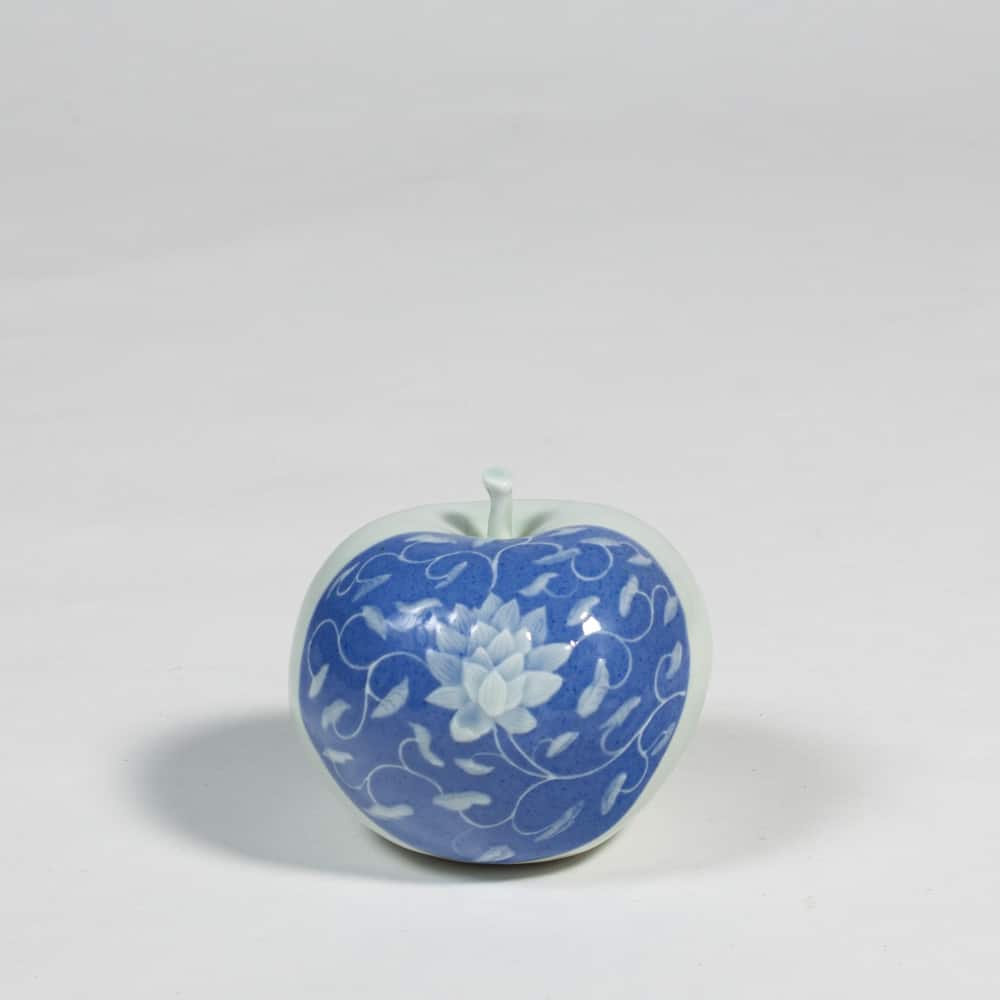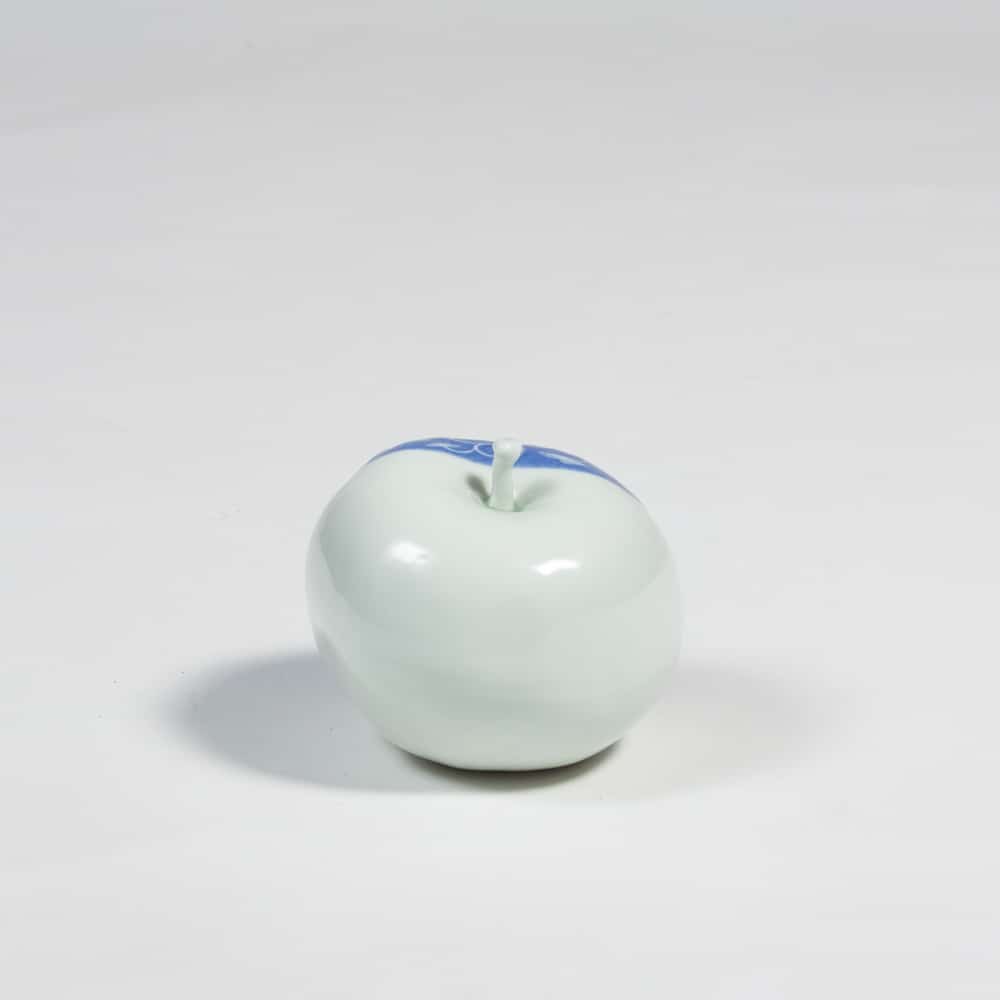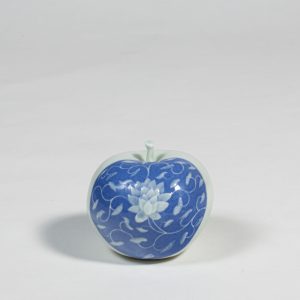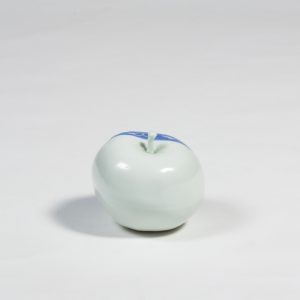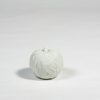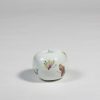Garden of Eden (Lotus Vine) by Diana Williams
$1,700.00
Medium: Porcelain
Description: Pâte-sur-pâte, slip painting, carving, glazed
Size: H 9cm x W 10cm
Sold
Make an EnquiryNote: Shipping of art is free in Australia
Artist Statement
‘Garden of Eden’ series
The apple has a long and fascinating history with many cultural and symbolic meanings such as life and love and the forbidden fruit from the ‘Tree of Knowledge’. My work incorporates a range of these symbols from different cultures using subjects like the Quail; a symbol of permanent relationship; the Lotus flower, symbolic of birth, rebirth and purity; Bamboo which is known for its strength and resilience; and the Snake and the temptation of Adam and Eve.
Most of my apples are made of near solid porcelain, a high-risk method which carries a large breakage rate. The heavier weight is necessary for the deep carving. I also like the feeling of this weight when held in the hand. Some of the decorative surface techniques I use is over-glaze and under-glaze painting, piercing and a skill which is rarely used today called Pâte-sur-pâte.
Details about Pâte-sur-pâte decoration
Pâte-sur-pâte is a French term used to describe a method of painting on ceramics with liquid porcelain clay called slip. It is one of the rarest methods of porcelain decoration and is very elaborate and expensive. The high cost of applying Pâte-sur-pâte in time, skill and technical knowledge has proved very difficult for many artists over the years therefore the art form is rarely used these days.
In the mid-19th century, French artist/designer Marc Louis Solon was working in France for the ceramic factory ‘Sèvres’. During his time there he tried to reproduce an antique porcelain Chinese vase which had been decorated with a beautiful relief painting. It took around 50 years of experimentation until Solon mastered the method. He ended up with a variation of this relief painting technique which included the use of a coloured background which was named Pâte-sur-pâte. This method was eventually abandoned due to the huge expense and massive breakage rate.
Some of the ‘Garden of Eden’ apple series have been decorated in the Pâte-sur-pâte method.
Successive layers of white porcelain slip are built up to form a relief by painting over the surface of the coloured dry green-ware base. The slip must be the right consistency and carefully applied in thin layers at the correct time. In some areas in excess of 30 thin layers can be applied and then meticulously and cautiously carved back through these built up layers of clay to the chosen depth of the design. This method creates the desired image. The grounded colour, glazing and firing must also be exact to complete the final work. The translucency of the design and success of the work can only be seen once it has been fired in a kiln at approximately 1300 Degrees Celsius. Despite rigidly following the strictest procedure there is still a very low rate of success.
This series has taken me nearly 2 years of experimentation using this method and also the firing with the weight of the apple . The high failure rate varying between 40% to 90%. Success depends on the skill, chosen design, the size of the image, firing and the determination of the artist.
Diana Williams

